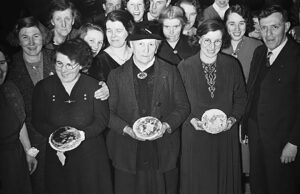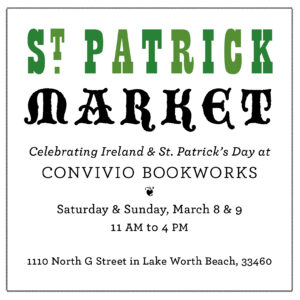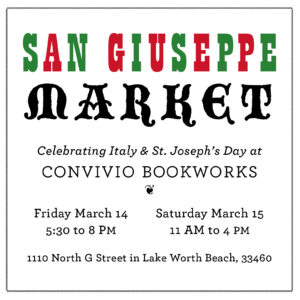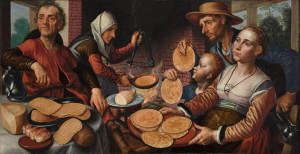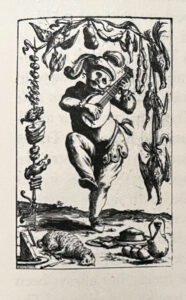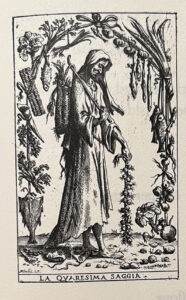Lent, it seems, has been a long time coming this year. It has, indeed, for most often this movable season of penitence arrives in February and here we are now, well into the first week of March. It’s also, you must admit, if you are an old Democrat like me, been a very long few weeks since the 20th of January. There are those who view Lent as a time of trial and travail, and it has most definitely felt this way in recent weeks for those of us who see the world in a very different way than do the current folks in charge. I’m in for a long four years.
But I’ve never seen Lent in this same dreary way. Yes, we make some sacrifices, if skipping meat on Fridays is to be seen as one. We eat fish on Fridays, or lentils, or pasta fagioli, but none of this feels to me like a sacrifice. I’m very content eating meals like this. And I know people give things up for Lent, but I was not brought up with this tradition. Some of the most important things I’ve ever done in my life have happened during Lent, like the year I brought my grandma, Assunta, to church every night during Lent for Adoration of the Blessed Sacrament. It was the year after Grandpa died, and it meant the world to Grandma to go every night, and we would stay, she and I, deep into the night in the little chapel, along with other pilgrims in this world. It was lovely. Father Seamus used to talk about “sins of omission,” as opposed to “sins of commission” –– the good things we fail to do, as opposed to the bad things we’ve done –– and his ideas have long resonated with me. I think of Lent as a time to perhaps do things you might not do (like take your grandmother to church every night for 40 nights), and I’m not so concerned about the things I might be missing because of Lent.
Be that as it may, it’s not Lent quite yet. That comes tomorrow, with Ash Wednesday. Today is Shrove Tuesday. It is the final day of the Carnival season that comes between Christmas and Lent each year, and it is a night, traditionally, when pancakes are on the table for supper. This is a tradition I fully support, and Seth & I: we are planning on two kinds of pancakes tonight: regular fluffy buttermilk pancakes for dinner, with bacon, and then later tonight, with our late night tea, Swedish pancakes, which are more like crepes. (There is a debate each year out in the world about which pancakes are the proper ones to eat on Shrove Tuesday; our approach, this year, is to eat both varieties.)
So, why the pancakes on this last night before Lent? Those who think Lent is a big sacrifice nowadays would most likely have been positively suffering through the season in years past. There was a time when the Lenten fast was much stricter. No eggs, no dairy, no meat at all… pancakes for supper on Shrove Tuesday was a ceremonial way of using up the last of the eggs, the last of the milk, the last of the sugar. In parts of Germany, the tradition calls not for pancakes tonight but for doughnuts! There, the night is known as Fasnacht or Faschnacht. And the Swedes: They will be eating semlor today: sweet buns scented with cardamom and filled with almond paste and cream. The day in Sweden is known as Fettisdagen: the same Fat Tuesday idea that gives us another common name for the day: Mardi Gras. The idea is the same, no matter where you are: using up all the remaining lard, sugar, eggs, and butter before Lent begins.
Seth and I, we will eat our pancakes tonight (both the American kind and the Swedish kind) with festivity and in good spirit, and in the morning, if we have it in us, we will approach that altar to have ashes smeared on our foreheads with the spoken reminder: Remember man that thou are dust and to dust you shall return. We are made of the stuff of this earth and we shall return to it. If nothing else, these forty days that follow tonight’s pancake supper will hopefully remind us that life is short, and we would do well to live the time we have with compassion and kindness for our fellow human beings, and to love each day, and, as we like to say here, to live the ceremony of each day, too. These are the things we feel are good and the things we feel are right.
COME TO THE SHOP!
Locals: the shop is open Saturdays from 11 AM to 4 PM at 1110 North G Street, Lake Worth Beach, FL 33460. (Do take note, though, that we’ll be closed Saturday March 22 and Saturday March 29.) And we’ve got two special events for you in March. First up, it’s our St. Patrick Market on Saturday & Sunday, March 8 & 9, from 11 AM to 4 PM each day. We’ll be playing Celtic music and featuring our offerings for St. Patrick’s Day and for St. Brigid’s Day and serving my sister’s homemade Irish soda bread and our own Löfbergs Swedish Coffee while you shop. The following week, come back for our San Giuseppe Market on Friday evening, March 14, from 5:30 to 8:30 PM, and on Saturday, March 15, from 11 AM to 4 PM. At this event, we’ll be playing Italian music and featuring our offerings from Italy and serving our Löfbergs Coffee with my sister’s homemade Zeppole di San Giuseppe, the classic Italian pastry that we enjoy once each year to celebrate St. Joseph’s Day. (If you wonder if perhaps my sister, Marietta, is a great baker, you’d be right to think so.) Both events should be great fun. You’ll love what we have in store for you! As for the rest of you, you’ll find all these offerings (minus the soda bread and zeppole, sorry) when you visit our online shop. We appreciate your support! (Click the images below to make them larger.)
Image: Annual Pancake Day Dance at Trewern (Wales). Photograph, February 10, 1940, by Geoff Charles. [Creative Commons via Wikimedia Commons, The National Library of Wales.]
